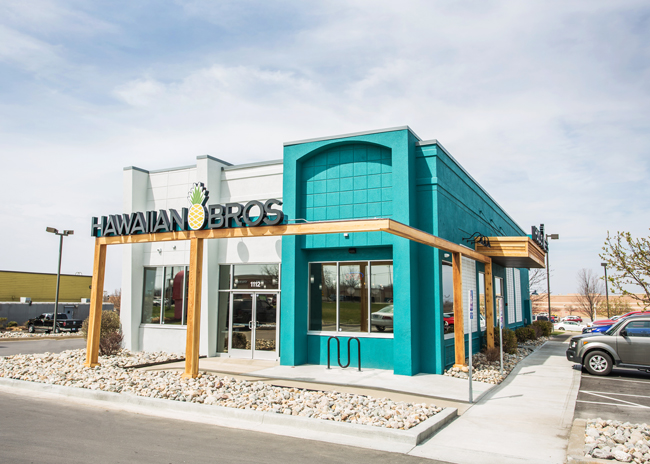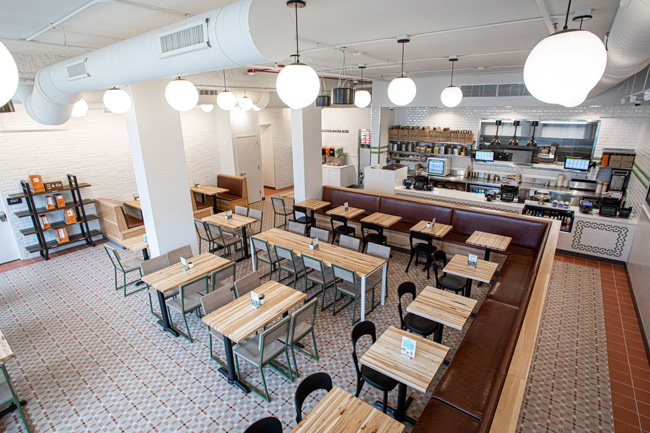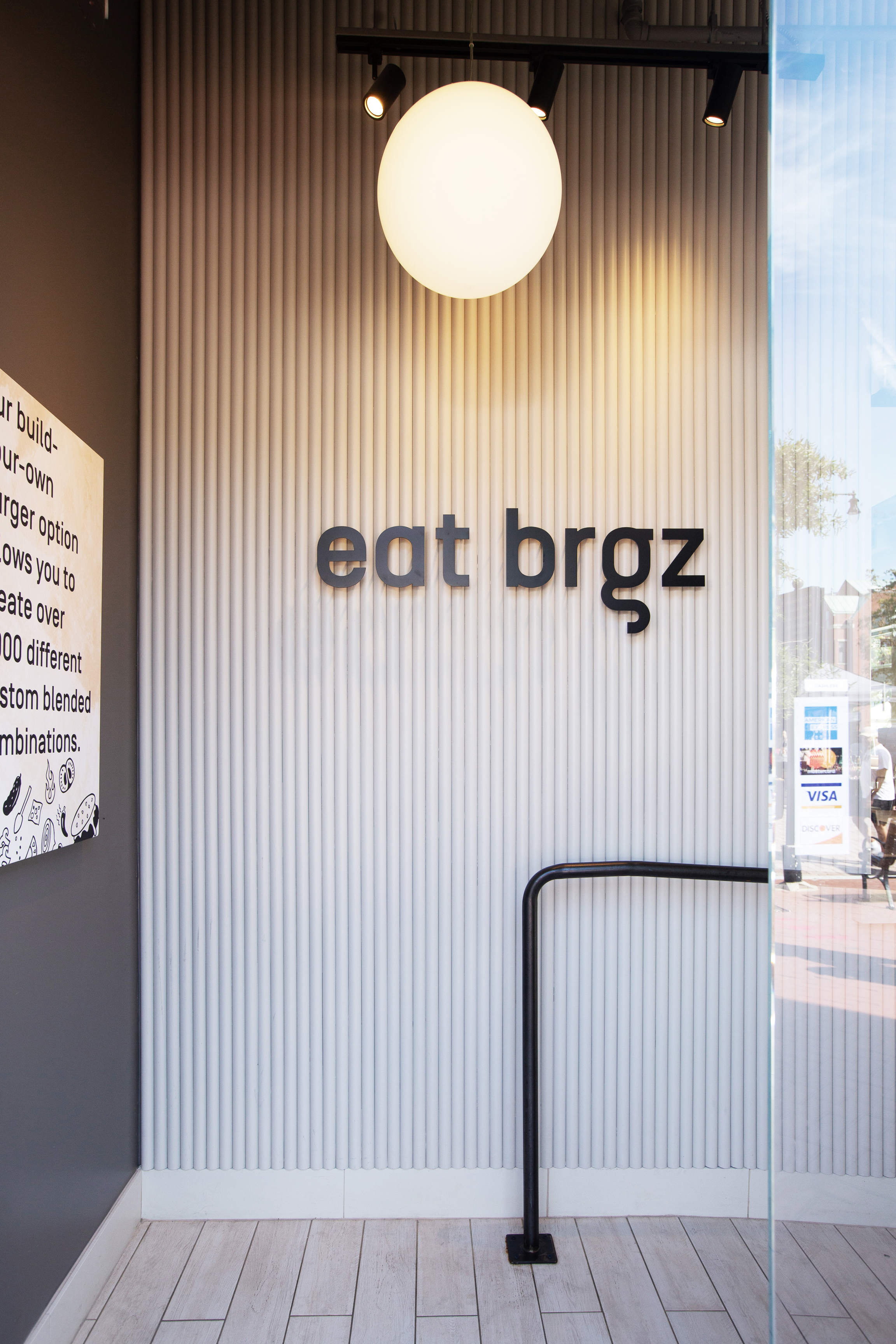Restaurant development may have slowed over the past year but by no means has it stopped. In fact, many brands have been busier than ever working to refine prototypes, shift economic and real estate models, implement new technologies, meet changing consumer demands and otherwise get on with the task at hand of regaining or — for a few outliers — maintaining strong development momentum despite the pandemic.
With the dark COVID-19 cloud over the industry beginning to lift, rd+d reached out to development leaders from four diverse brands, inviting them to take stock, share strategies and dish a bit about what’s been and what’s to come. Their concepts are diverse, ranging from fast-casual sandwich to wine-centric gourmet dining. All of their brands have continued to grow, thanks in part to smart, strategic development, a strong focus on collaboration and a willingness to be flexible.
Between them, these development professionals have more than 70 years of experience and have helped to grow some of the industry’s top brands. Read on for insights from our 2021 Developers Dish! participants:
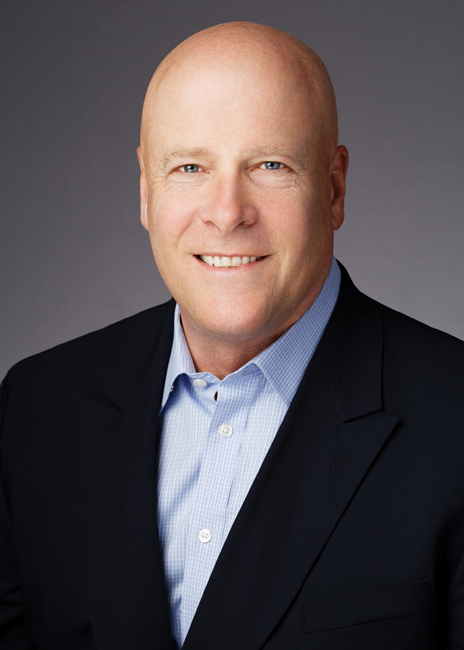 David BloomDavid Bloom, chief development and operating officer, Capriotti’s Sandwich Shop, a Las Vegas-based chain founded in 1976. Franchising since 1991, the brand has 115 units.
David BloomDavid Bloom, chief development and operating officer, Capriotti’s Sandwich Shop, a Las Vegas-based chain founded in 1976. Franchising since 1991, the brand has 115 units.
Chief Development & Operating Officer: Capriotti’s Sandwich Shop
Years in restaurant development: 30-plus
Favorite item on the menu: The Capastrami, or maybe the Cheese Steak
Best recent read: “The Future is Faster Than You Think: How Converging Technologies are Transforming Business, Industries and our Lives”
One pandemic-era change I hope sticks around: Working remotely. We haven’t been hurt by it and, in polls we’ve taken of employees, not a single person has said they want to go back into the office. I think and hope that’s here to stay.
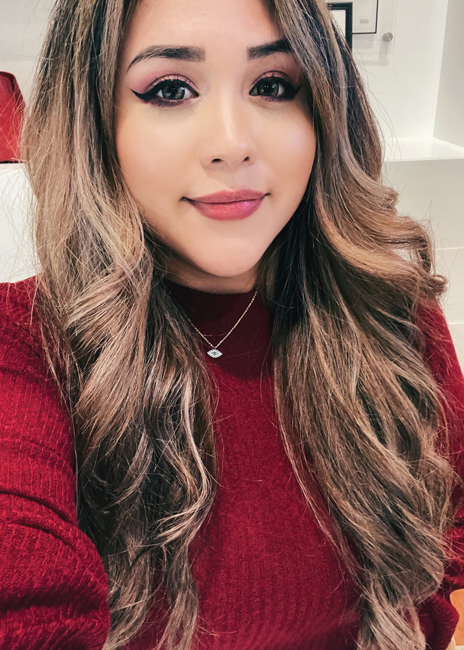 Margaret CarreraMargaret Carrera, chief development officer, The Halal Guys, a New York City-based halal street food chain launched as a food cart in 1990. Franchising since 2014, the brand has grown to 88 brick-and-mortar units.
Margaret CarreraMargaret Carrera, chief development officer, The Halal Guys, a New York City-based halal street food chain launched as a food cart in 1990. Franchising since 2014, the brand has grown to 88 brick-and-mortar units.
Chief Development Officer: The Halal Guys
Years in restaurant development: 5
Favorite item on the menu: The rice. Yes, the rice. It’s amazing!
Best recent read: Poetry, in general. With all that’s happening and everything I need to do day-to-day it helps bring me back into a zone where I can find inspiration.
One pandemic-era change I hope sticks around: Front-of-house focus on sanitation, hand sanitizing stations, social distancing and safety partitions. Following great sanitizing protocols and ensuring that everything is clean and ready for guests to feel secure in restaurant spaces will continue to be extremely important.
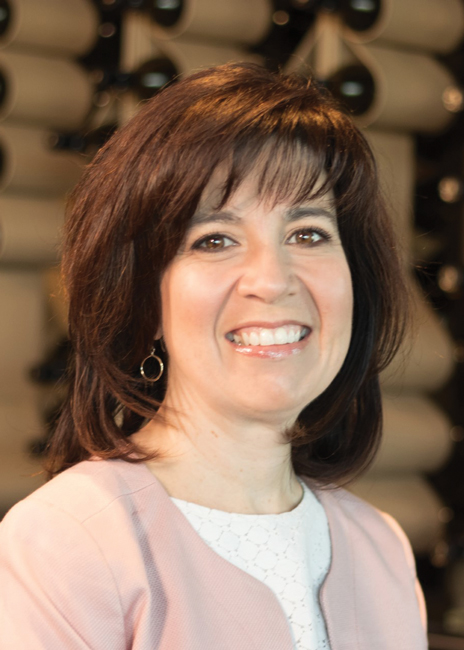 Jennifer DurhamJennifer Durham, chief development officer, Cooper’s Hawk Winery & Restaurants, a 45-unit upscale casual winery and gourmet dining chain founded in 2005. Headquartered in the Chicago area, all units are corporate owned.
Jennifer DurhamJennifer Durham, chief development officer, Cooper’s Hawk Winery & Restaurants, a 45-unit upscale casual winery and gourmet dining chain founded in 2005. Headquartered in the Chicago area, all units are corporate owned.
Chief Development Officer: Cooper’s Hawk Winery & Restaurants
Years in restaurant development: 20
Favorite item on the menu: Definitely the Pan-Roasted Barramundi
Best recent read: It’s not a book, but I received a MasterClass subscription as a post-holiday gift that I’m super-excited about starting.
One pandemic-era change I hope sticks around: The restaurant industry’s willingness and ability to be flexible and adapt to guests’ changing needs. We’ve redefined what it means to be a restaurant and created solutions for serving our guests that extend well beyond the four walls.
 Jeff SturgisJeff Sturgis, chief development officer, Another Broken Egg Café, a 74-unit breakfast, brunch and lunch casual-dining chain based in Orlando, Fla. Founded in 1996, the brand began franchising in 2005.
Jeff SturgisJeff Sturgis, chief development officer, Another Broken Egg Café, a 74-unit breakfast, brunch and lunch casual-dining chain based in Orlando, Fla. Founded in 1996, the brand began franchising in 2005.
Chief Development Officer: Another Broken Egg Café
Years in restaurant development: 15
Favorite item on the menu: Huevos Rancheros, Biscuits and Gravy or Cinnamon Roll French Toast — it’s a tie
Best recent read: “Walking to Listen: 4,000 Miles Across America, One Story at a Time”
One pandemic-era change I hope sticks around: Less-crowded airports and empty middle seats on flights. I travel a lot for work, and it’s been a whole different and pleasurable experience.
To what extent has the COVID-19 crisis impacted your brand’s development targets?
Bloom: We had a period of uncertainty early on, but the reality is that the pandemic has not negatively impacted our business. We had another record year of growth last year in terms of revenues, profitability and development. We opened just under 20 new Capriotti’s locations and added more than 100 shops to our development pipeline. The biggest 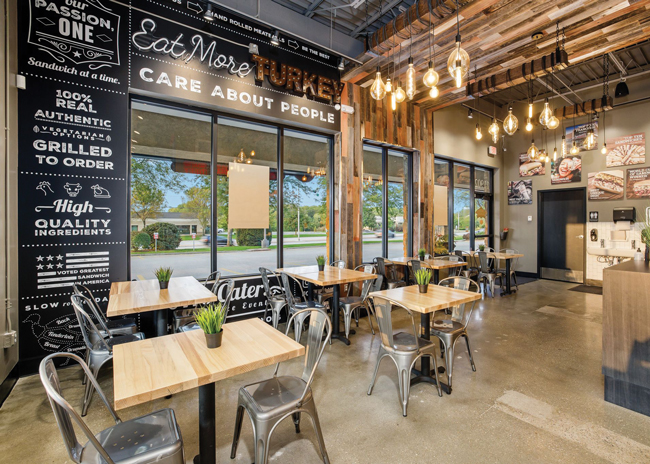 Image courtesy of Capriotti’s unknown for us last year was opening shops in new markets, where consumers were unfamiliar with the brand. But once we started opening and realizing those units were performing as well as or better than those in existing markets, we knew we were fine. In 2021, we plan to open approximately 40 new traditional street-front restaurant units. We’ve also launched relationships with all of the major ghost kitchen brands and that aspect of our business is accelerating.
Image courtesy of Capriotti’s unknown for us last year was opening shops in new markets, where consumers were unfamiliar with the brand. But once we started opening and realizing those units were performing as well as or better than those in existing markets, we knew we were fine. In 2021, we plan to open approximately 40 new traditional street-front restaurant units. We’ve also launched relationships with all of the major ghost kitchen brands and that aspect of our business is accelerating.
Carrera: We weren’t able to expand as aggressively as we’d planned to in 2020, mostly because a lot of the states shut down and we experienced delays in getting approvals. But despite everything, we were still able to open five new Halal Guys units last year. Our franchisees are very, very passionate about the brand, and we did everything we could to help them execute and get launched during a very difficult year. This year, we expect to open 15 to 30 new units throughout the U.S. and Canada.
Durham: With dining rooms closed and the world being put on a proverbial pause, 2020 was a bit of a speed-bump year for us. We opened three Cooper’s Hawk restaurants as opposed to seven that we had planned; the remaining four were pushed into 2021. We’re still looking for site opportunities and our landscape has evolved over this timeframe based on what’s happening with developments. In the case of units in new developments, those are moving forward pretty much on schedule. But some of the other developments we were looking at may have been put on pause as landlords have also been pinched. Despite some delays, however, our accelerated growth plan continues. We anticipate opening eight new restaurants in 2022, which will get us to the 50-unit milestone, and another 10 to 12 in 2023.
Sturgis: Our expectation was that we were going to open 12 new Another Broken Egg Café units in 2020, three of which had opened before COVID-19 hit. We ended up opening nine cafes last year, so six units after the pandemic hit. Three of those saw their projected openings delayed by anywhere from one to three months, while the rest, planned for later in the year anyway, opened on schedule. The remaining units that we had expected to open last year opened earlier this year. As for 2021, we’re on track to open 18 new cafes.
In what ways, if any, has your brand pivoted in light of recent consumer behavior and/or marketplace changes?
Bloom: We’re expanding and accelerating our ghost kitchen relationships, which was a channel already in the works pre-COVID. We’ve figured out how to be successful in those environments, which are typically only around 250 square feet, and we have good relationships with our ghost kitchen partners’ leadership and marketing teams. Strategy-wise, it’s not a replacement — not a question of retail or ghost kitchen. It’s how do we optimize the presence of the Capriotti’s brand in any given market? How do we take advantage of the business opportunity with a mix of those? As for the traditional sandwich shops, the majority of our sales has been off-premises for some years now. It was at 60%, but since COVID is much higher. That trend has impacted our prototype size. We’re now developing units that are 1,200 or 1,400 square feet compared to 1,800 or 2,000 square feet a couple of years ago.
Carrera: Like most brands, we’ve put a lot more emphasis on our mobile application for remote ordering. We had rolled that out mid-2019, and we were fortunate to have already well-established relationships with third parties for delivery, which also remains a very important channel for us. We’ve recently refreshed our website and we’ve put a huge focus on providing a safe design concept for our restaurants, one that allows for social distancing, sanitation stations, partitions and easy access for guests to place and pick-up orders. It’s also very important for us now to target spaces that are a little bigger, something within 1,500 to 2,000 square feet. We want to ensure that we’re able to execute a quality product, whether it’s for takeout, delivery or dine-in. Dine-in is still a big factor for us and providing a great experience as well as a safe environment is critical. With a larger footprint, it’s much easier for us to be able to do that, so we’re working with our franchisees to make sure that we’re finding those right sights. We’ve also started executing into ghost kitchens. We have our own ghost kitchen here in New York and two in California, which have been great for helping us to meet customer demand in new and efficient ways.
Durham: Our development strategy around the types of sites we’re looking for hasn’t changed. Cooper’s Hawk is unique because we’re not just a restaurant, we also have the wine club/retail component. Wine club members can have three different types of experiences: a quick stop just to pick up their wine of the month; a more immersive experience, in which they might want to taste the wine, be educated about it, and linger a bit in the tasting room but not have a full dining experience; and the more traditional, dine-in restaurant experience. One of the biggest strategic changes we’ve made due directly to COVID has been introducing curbside pickup and delivery. We’ve always offered carryout, but it wasn’t a priority. We’re an experiential brand focused on providing an environment in which guests can connect and relax. We had to quickly adjust to curbside and delivery and create ways to provide an on-brand experience outside of the restaurant. We’ve done some innovative things that do bring folks together, things like virtual experiences that are fun and engaging for wine club members. And we’ve created packages that enable guests to have the Cooper’s Hawk experience at home in a variety of ways.
Sturgis: From a market-planning standpoint, we have to be a bit more sensitive to the markets we’re looking at for new cafes as daytime patterns have shifted related to people working from home. We’ve never been heavily dependent on dense office areas or urban core sites, but we do benefit from a daytime presence for Monday through Thursday 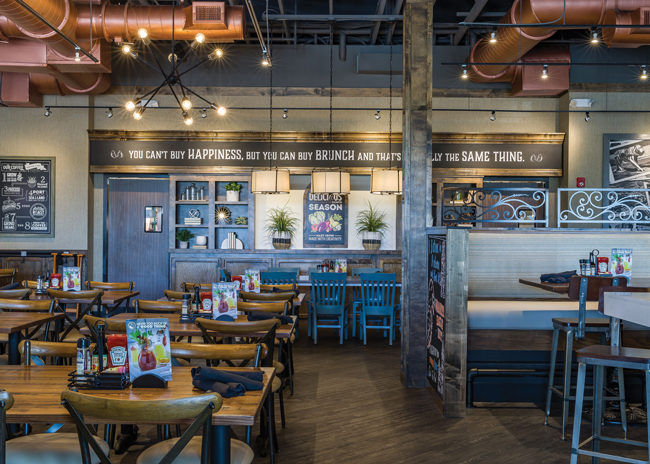 Image courtesy of Another Broken Egg Cafébusiness. We’re busy everywhere on Saturday and Sunday, but what separates a good performing Another Broken Egg Café from a great one is weekday volume. We’ve seen our weekday sales increase year-over-year because more people are working from home and have more time and flexibility to go out during the week. We think some of that will be a permanent shift, so outlying suburban areas become more interesting to us. Also, at this time last year, off-premises was a very nominal part of our business — 2% or 3% of overall system volume. When COVID hit, we immediately jumped into the off-premises business, necessitating both layout and operational changes. Dine-in business has come back and is about as good as it was before the pandemic, but we now have this extra layer of off-premises sales, which today is 12 to 13% of sales. We’re looking at how and where we stage orders, and how we can make better use of secondary or side entrances into our spaces to accommodate pickup and delivery business without impacting the dine-in experience. All of our new builds and remodels are being done in ways that support those two lines of business.
Image courtesy of Another Broken Egg Cafébusiness. We’re busy everywhere on Saturday and Sunday, but what separates a good performing Another Broken Egg Café from a great one is weekday volume. We’ve seen our weekday sales increase year-over-year because more people are working from home and have more time and flexibility to go out during the week. We think some of that will be a permanent shift, so outlying suburban areas become more interesting to us. Also, at this time last year, off-premises was a very nominal part of our business — 2% or 3% of overall system volume. When COVID hit, we immediately jumped into the off-premises business, necessitating both layout and operational changes. Dine-in business has come back and is about as good as it was before the pandemic, but we now have this extra layer of off-premises sales, which today is 12 to 13% of sales. We’re looking at how and where we stage orders, and how we can make better use of secondary or side entrances into our spaces to accommodate pickup and delivery business without impacting the dine-in experience. All of our new builds and remodels are being done in ways that support those two lines of business.
What’s one thing you wish designers would better understand about the development side or do differently to ensure more effective partnerships?
Bloom: We don’t want a cookie-cutter brand. I don’t want to have a truck back up, unload the entire store, bolt it in and be open four days later. We want a more authentic, localized look and feel, which takes more work and investment. I get a lot of calls from architects and designers pitching how they can solve our national problem, but it’s not that easy. Well, it’s easy if we just want to spend whatever it takes, but then we ruin the economic model and the brand becomes less viable. A lot of brands let their egos inflate and build bigger and more beautiful stores. But two or three years later, the model isn’t strong anymore and becomes unattractive from an investor or owner standpoint. We take a very long-term approach that protects our model, and that’s something our designers need to really understand and embrace.
Carrera: It’s so important to find the right design partner, which we’ve been fortunate to do. We wanted to ensure that our partner has developed restaurants and, more specifically, has experience with other fast-casual brands that they can bring to our projects and make work for Halal Guys. It’s critical that they understand what it entails to operate within the four walls and focus on efficiency as well as aesthetics and guest experience.
Durham: The economics of the deal are really important to the success of the restaurant. One of the things that our current design/architect firm is great about is understanding the confines of the budget. So, as we look at new sites and new opportunities, it’s, ‘How do we make the best restaurant for that particular venue within that budget?’ Budgets aren’t unlimited, but oftentimes the tighter the budget the more creative the teams are. Ultimately, when we deliver projects on time and on budget, we’re freed up to continue to work toward optimizing the footprint. If designers understand and commit to that, it gives us more cash flow to be able to build more restaurants, which is kind of a self-fulfilling prophecy that benefits them and us.
Sturgis: Designers are always going to create something that looks great, but ultimately it has to be executed from a construction standpoint and within a reasonable cost parameter, and it has to work operationally. I do think you start with that nice, ideal design concept, putting cost aside for a minute, to let them show what they think your unit and your customer experience could look like. But then comes the work of figuring out how we can achieve that look economically and operationally. They need to understand materials and durability and what’s appropriate not just for our brand aesthetic but for its volume and service needs. Polished concrete flooring, for example, may look great and can be less expensive, but it doesn’t work for us because with the volume we do it shows wear marks quicker than other solutions. These are the types of things designers need to understand — how does it work in practice?
What are your go-to strategies for containing or reducing development costs?
Bloom: We track every single project by line item. Before they sign their lease, we try to give franchisees as close an estimate by line item, or at least the range, for their specific site based on their deal terms so that there are no surprises. Some end up choosing to spend more to get exactly what they want, which is fine, but we always want to make sure we eliminate surprises. Second, we try to make sure that it actually ends up within the range we thought it would. Every quarter, we sit down and look at budget to identify if and where costs are creeping up. Sometimes, in the case of more expensive markets, there’s nothing we can do about it. But we keep a close eye on it and make sure we’re balancing things out elsewhere. At the end of the day, it’s about getting the economics we want with the space and budget that we have and still getting a Capriotti’s we’re really proud of.
Carrera: I always advise our franchisees to seek out existing restaurant spaces for conversion versus building new or taking over a white box. That’s a very cost-effective way for us to be able to build out because the infrastructure is already in place. Another very important cost-saving strategy for us is finding the right vendors to work with our franchisees on designs and materials selections. It’s not about settling for lower-cost products, per se, but finding a balance between cost and durability. We want materials that will be as long-lasting as possible but at the same time we need them to be cost-effective. So, facilitating that relationship between vendors and our Halal Guys franchisees, and providing that type of advice and support is very important.
Durham: It’s our job to educate project partners early in the process about the parameters of the development, the vision and the budget. Along the way we go back to focusing 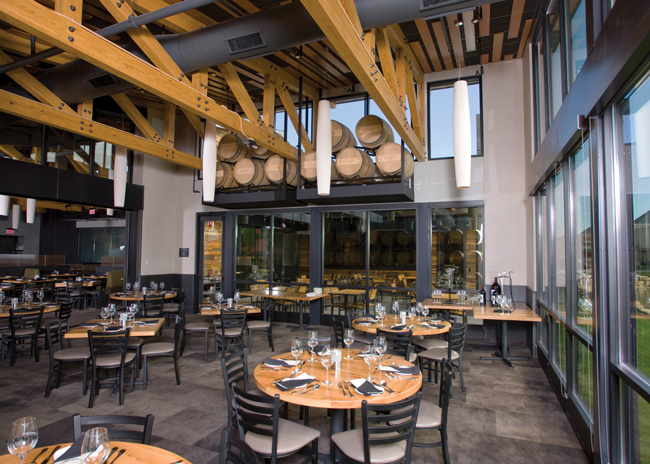 Image courtesy of Cooper's Hawkon how it’s going to work and to making certain that from a durability standpoint the materials and finishes will deliver on what we need operationally while also providing a wow factor. We’ve also started conducting group value-engineering workshops where we bring together our design/architecture partner, GCs, kitchen designers, brokers, developers, engineers — all of the key players in getting new Cooper’s Hawk units open. We popcorn ideas and work together to identify ways to save money and/or time. We did our first one in February 2020 and it’s something that we’ll do every 18 months to 2 years. The more inclusive the process is, the better.
Image courtesy of Cooper's Hawkon how it’s going to work and to making certain that from a durability standpoint the materials and finishes will deliver on what we need operationally while also providing a wow factor. We’ve also started conducting group value-engineering workshops where we bring together our design/architecture partner, GCs, kitchen designers, brokers, developers, engineers — all of the key players in getting new Cooper’s Hawk units open. We popcorn ideas and work together to identify ways to save money and/or time. We did our first one in February 2020 and it’s something that we’ll do every 18 months to 2 years. The more inclusive the process is, the better.
Sturgis: I focus on maintaining good relationships with our vendors and suppliers. They’re our partners. If we look at them purely as lowest cost providers that’s not productive. I want them to help us open multiple Another Broken Egg Cafés, to understand our needs and appreciate that as a franchise company, the more cafes we open the more cafes we’re likely to open because more openings creates more interest, which leads to more franchise sales. So, I think it’s important to always talk to your vendors and suppliers about the long-term goals of the brand and to include them in your ongoing prototype review and analysis. Another is to stay in touch with the operations teams and on top of what’s working, what isn’t and why. And, similar to what Jennifer describes, a big go-to strategy is what we call a development summit. We bring in all the stakeholders involved in opening cafes and discuss how we can build new units more cost-effectively without sacrificing operational needs and guest experience. By getting all of us together in one room, or on Zoom, everyone better understands each other’s perspective. There’s no finger pointing; it’s just nice, open dialogue, and we almost always find some immediate cost savings that don’t impact anything other than cost.
What do you see as challenges and opportunities in the current market relative to construction?
Bloom: Construction costs have gone up and tenant improvement allowances have not gone up commensurately, so landlords aren’t helping to offset the increased costs. We like to be at a 3-to-1 capex-versus-revenue ratio. We think that’s a very strong model for the fast-casual segment, so keeping a lid on costs while building a great-looking store is increasingly challenging. But it presents an opportunity for our real estate, design and construction teams to work together very closely. When we’re looking at the deal, when we’re talking to the landlord, we’re already looking at what issues we’re going to face from a construction standpoint, at what we can build into the deal to offset some of those costs, at how we can get creative with the layout, at whether there’s anything we need to get from the landlord in advance. We see having really collaborative design and construction and real estate teams as an opportunity, and that’s how we run the process.
Carrera: We’ve had some construction delays because a lot of states have shut down and we’ve been unable to get permitting done on schedule, which has been challenging.  Image courtesy of The Halal GuysBut with things on pause, the upside is that we’ve been able to do a lot of legwork and ensure that we can provide everything the franchisee needs as it relates to the construction process and the design elements for the restaurant. As states start opening back up and permitting is in place, we’re able to develop very quickly. We can turn around a restaurant in three to six months, depending on location.
Image courtesy of The Halal GuysBut with things on pause, the upside is that we’ve been able to do a lot of legwork and ensure that we can provide everything the franchisee needs as it relates to the construction process and the design elements for the restaurant. As states start opening back up and permitting is in place, we’re able to develop very quickly. We can turn around a restaurant in three to six months, depending on location.
Durham: Over the past three years, we’ve seen well over a 15% increase in overall cost of construction, labor and materials, and costs are continuing to rise in the current environment. GCs and subs are busy with commercial projects but also with residential and medical facility projects, in part because of low interest rates. So pricing isn’t coming down and labor is tight. From an opportunistic standpoint, we’re working to optimize our footprint and making some key changes to improve our overall investment. For example, instead of outsourcing or having the GC be responsible for certain things, our development team is sourcing more internally to save the markup on those purchases. And we undertook a variety of value-engineering exercises while we were on pause in late spring and early summer of 2020. We found some nice savings to offset the construction cost increases. We’ve also refined our budgeting process to give us more confidence in our expected overall cost of construction when we do begin to break ground on upcoming projects.
Sturgis: In areas that we’re actively developing, the construction community is busy. A lot of spaces became vacant during the pandemic and they’re quickly being backfilled, keeping GCs and subs booked up with remodel and retrofit work. It’s always a challenge getting in line with them to get your units built, but more so right now. But an opportunity is the fact that we can go into second-generation spaces, which helps the GCs with the projects and makes them more efficient. And we have a few GCs and their related subs who have built cafes for us over the past couple of years and who are happy to give us the work because they know we’re going to be a reliable source of business going forward. We see it as an opportunity to continue to develop those relationships, which helps us get projects done. With fewer new restaurants being built, we’re also taking opportunities to work with vendors and suppliers of equipment, furnishings, lighting and other categories to make sure we’re optimizing those relationships and related costs. That doesn’t mean beating them up on negotiation. It means understanding what their workflows are, what our needs are, what we think our trajectory of openings is going to be, and reviewing our partnerships with those companies because we do look at them as partners in opening our units.

